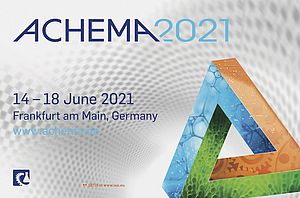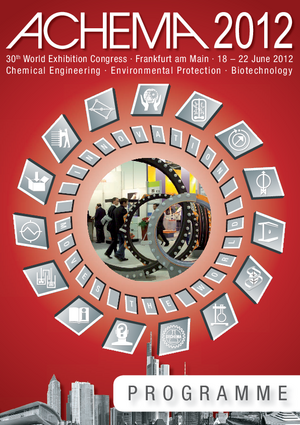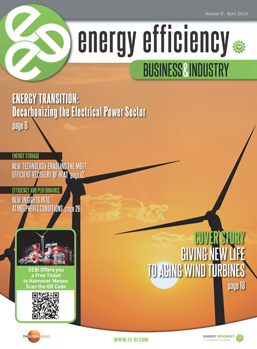“New records in renewable electricity generation”– “Wind and solar yesterday covered lion’s share of energy demand” – media and the internet are not short of success messages on renewable energy generation in Germany. But this apparent good news has a downside, too: With an increasing share of renewable energy, especially wind and solar power, the volatility of energy generation increases. Peaks in energy supply are so high that up to 5 billion kWh of renewable electricity have to be cut off per year because the grid cannot accommodate it. At the same time, the nation struggles with meeting its climate goals due to the ongoing emissions from coal power plants that are needed in order to ensure the energy supply on windless nights. Thus, while on 1 January 2018, according to “Agora Energiewende” more than 95% of the electricity in the German grid came from renewable sources, on 24 January 2017 more than 90% of energy demand had to be covered by conventional power plants, according to BDEW.
Guaranteeing 24/7 energy supply
So far, this “conventional reserve” is the only way to secure a 24/7 energy supply all year round. Expanding the renewable generation capacities with a geographic spread so that always somewhere the wind is moving a windmill or the sun is shining on a photovoltaic plant takes a long time and leads to increasing overproduction on windy and sunny days.
The existing storage capacities such as pumping plants and reservoirs are limited and in Germany almost exhausted. Battery technology is being pushed, but scalability is restricted and the consumer uptake of electric mobility is slow. Moreover, in order to level out summer/winter fluctuation in renewable energy generation, long-term storage is required.
Potential alternatives: Power-to-X
Therefore, researchers and industry are looking for alternatives. “Power-to-X” is one of the hot topics of the day – a vision moving towards application. The basic idea: Unused electricity is used to produce chemicals that can be stored without significant loss and can either be reconverted to energy or used as a basic resource for the chemical industry. This is more than just a technological innovation – it will change businesses and value chains fundamentally. As sectors such as electricity, gas, mobility and the chemical industry become more integrated, new cooperations are essential.
The “traditional” conversion path of electricity to energy-rich substances is the electrolysis of water. Hydrogen has multiple potential uses, making it a flexible and versatile energy store, especially as it can – at least to a certain limit – be coupled with existing gas infrastructures. So far, however, the technology is not competitive. Projects such as HYPOS – Hydrogen Power Storage & Solutions East Germany e.V. are taking up the challenge to find the most cost-efficient pathway and create a showcase by combining technological innovations and existing networks and infrastructure.
Current “Power-to-X” concepts take the approach one step further: They use renewable electricity to produce not only hydrogen, but by drawing on CO2 as an additional readily available resource, they synthesize methanol or more complex molecules such as synthetic fuels. This could provide the opportunity to kill two birds with one stone: By producing carbon-neutral fuels, greenhouse gas emissions from the mobility sector could be drastically reduced long before the onset of the era of electric mobility.
Great challenge
What sounds so easy in theory, however, poses big technological challenges: The conversion of CO2 requires a lot of energy and/or highly sophisticated catalysts. Technology development is going at full blast: The Federal Ministry for Research and Education has launched the funding program “Kopernikus”. It is divided into four topics: New grid structures and systems integration addresses questions of infrastructure and its interlinking. A project on industrial processes focuses on “demand side management”, meaning possibilities to adjust production processes based on available electricity. And in “Power to X”, 64 project partners from industry and research organizations are looking for the most effective solutions: Does the transformation of water and CO2 via (co-)electrolysis to hydrogen or synthesis gas – platform chemicals with a plethora of uses – pay off? Should hydrocarbons or oxo-compounds for mobility or chemicals such as long-chain alcohols for the chemical industry be the goal? In the course of Kopernikus P2X, coordinated by DECHEMA, RWTH Aachen and Forschungszentrum Jülich, a range of technical solutions will be developed, and different pathways will be evaluated.
If these technologies become successful – and experts certainly expect this to happen – an unexpected challenge might arise: So far, CO2 conversion technologies depend on punctual sources. One day, if CO2 conversion is a standard addition to any CO2 emitting plant, CO2 might actually become a scarce resource. The Swiss company Climeworks is setting forth to address this problem: They have developed a technology to capture CO2 from air and are aiming at capturing 1% of global CO2 emissions from the air by 2025, says Dr. Jan Wurzbacher, Managing Director.
But is the success of Power to X technologies up to engineers and scientists alone? No, say experts almost unequivocally. Dr. Ralph-Uwe Dietrich, Deutsches Zentrum für Luft- und Raumfahrt e.V., warns: “Without strong political authority the market introduction of power-to-X will not start.” And Dr. Max Peiffer, Assmann Peiffer Attorneys, adds: “The current energy legislation does not provide a proper framework for Power-to-X-systems. The legislator needs to implement changes.”
Visit the ACHEMA congress sessions “Future energy supply” and “Electricity as a resource” to learn more about technical solutions. The plenary lecture “Sustainable Chemical Value Chains: New Perspectives for Sector Coupling” on Wednesday, 13 June 2018, by Walter Leitner, Max Planck Institut für chemische Energiekonversion, Mülheim/D and RWTH Aachen/D, and Markus Steilemann, Covestro AG, Leverkusen/D, will show how partnerships between industry and science can promote this development.
Dr. Kathrin Rübberdt, ACHEMA Communications


























